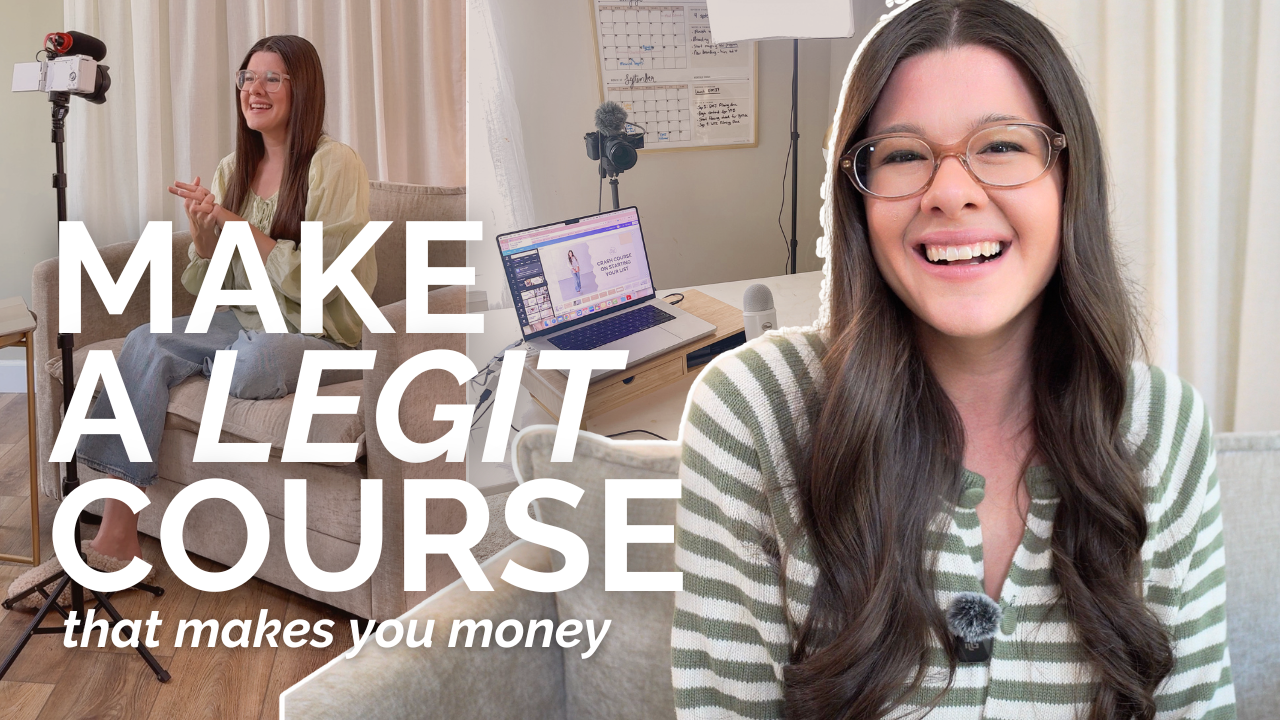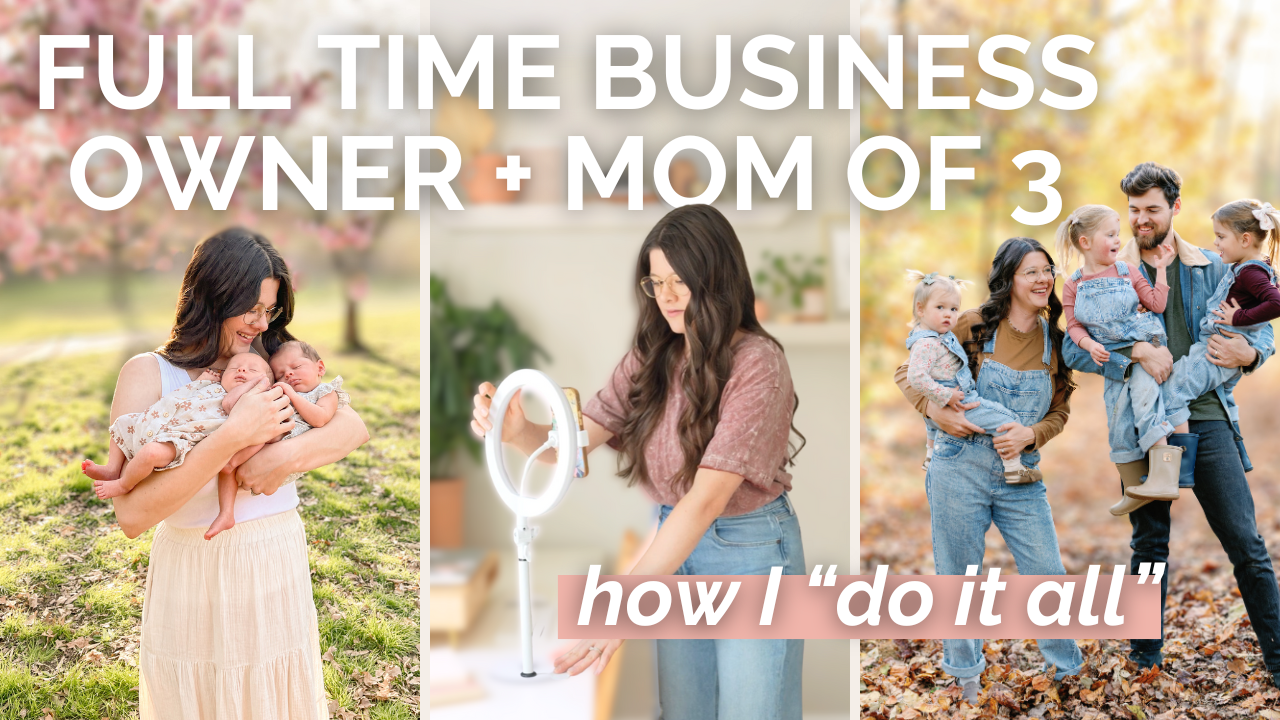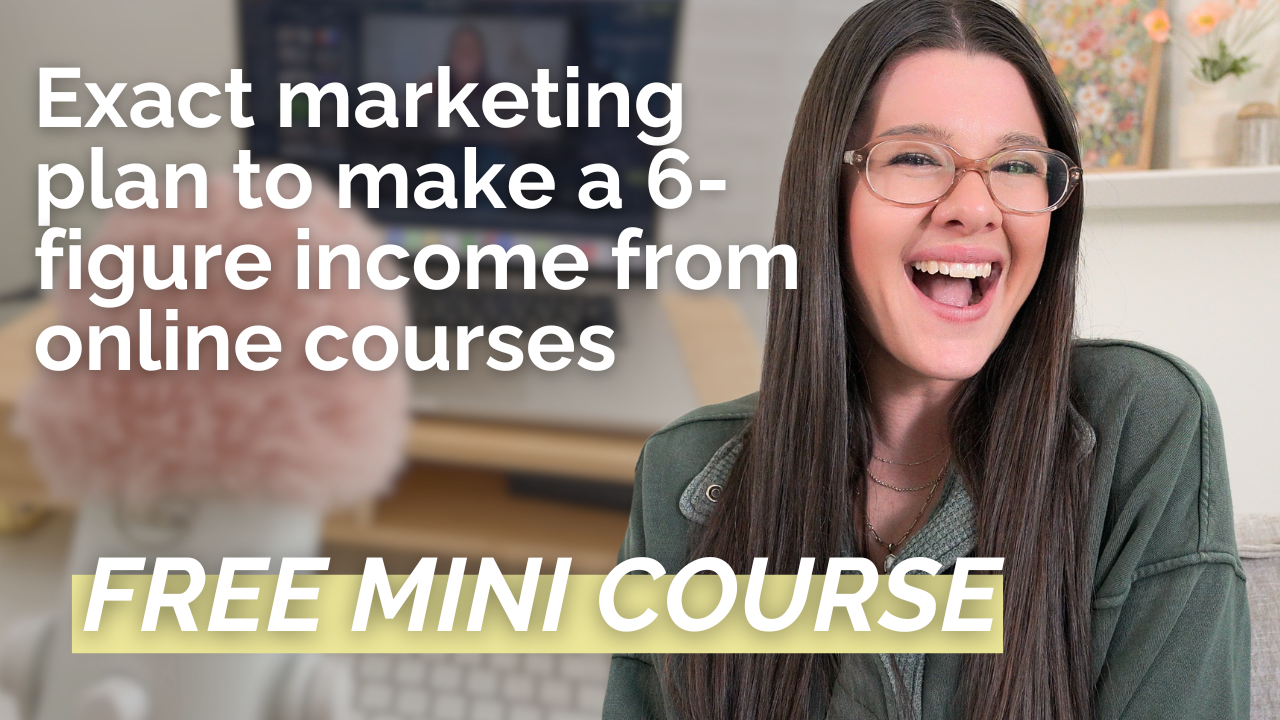If you’ve ever launched your course, crossed your fingers, and then… crickets — you’re not alone. So many course creators find themselves in this exact place. The good news? There is a reason your course isn’t selling — and more importantly, there are clear, actionable fixes.
In this week
snew podcast & YouTube, I’m diving into the most common mistakes I see course creators make when they’re wondering why their digital product isn’t taking off. I’m also sharing exactly what to look at, what to change, and how to set up your course for success — so it actually becomes something people want to buy.
LINKS MENTIONED IN VIDEO:
- Free Google Doc on courses that actually sell: https://stephaniekase.com/coursethatsells
- Check out Create It Bot Squad – create your course in an afternoon: https://stephaniekase.com/createitbotsquad
Let’s walk through the must-have pieces every course creator should focus on to build a course that not only sells — but sells consistently.
Start With Actual Market Research (Not Just a Gut Feeling)
If your course isn’t selling, the very first place I recommend looking is your market research. And I don’t mean asking ChatGPT or guessing based on what you think sounds good. I’m talking about real, specific research from your actual audience.
Ask yourself:
- What are your ideal clients telling you?
- What questions do they constantly ask?
- What are their pain points?
- What do they want help with — and more importantly, how do they describe those problems?
It’s easy to create a course around what you want to teach, but the key to a course that sells is creating something your audience already wants — and saying it in their language. Comb through your DMs, onboarding forms, comment sections, customer emails — anywhere they’re talking to you. That’s where the gold is.
When you do that, you’re not only going to write better messaging, but you’re also going to build a course that people are excited to join because it speaks directly to what they’re searching for.
Launch to Your Own Audience First
Once you’ve validated your course idea through real market research, the next step is launching it — and not just to anyone, but specifically to your own audience.
Your warmest leads — the people already following you, subscribed to your email list, or engaging with your content — are your easiest buyers. These are the people who already trust you. So before you even think about ads or paid traffic, focus on launching to the community you’ve already built.
One of the best ways to test your messaging before a full launch is to create content around your course topic. Share value-driven posts, ask for feedback, or even send out a simple audience survey to test if the topic resonates. If your content lands well and people are asking for more, it’s a great sign that you’ve hit the mark.
Not only does this give you a chance to refine your messaging, but it also gives you confidence heading into your launch — knowing you’ve created something people are already interested in.
Course Structure Matters More Than You Think
The days of “just record a few lessons and upload them” are over. People expect more. The structure and delivery of your course has a huge impact on how valuable it feels — and whether or not people actually want to buy it.
Your course should cater to different learning styles. This might include:
-
Video lessons (with your face on camera!)
-
Downloadable slide decks
-
Audio-only versions for on-the-go learning
-
Workbooks, templates, or plug-and-play resources
-
AI integration (like a chatbot trained on your course content)
This makes your course more accessible and more valuable, especially for buyers who want to know exactly what they’re getting.
Another tip? Include at least one bonus — and not just any bonus, but one that truly supports your core offer. A few ideas might be a case study, guest expert training, or even a mini-course that complements the main content. Bonuses aren’t about fluff — they’re about creating that “holy cow this is a no-brainer” feeling for your audience.
Don’t Underestimate the Power of Social Proof
Your course might be amazing — but if you’re the only one saying that, it’s going to be a tough sell. Especially in 2025 and beyond, people are more skeptical than ever. They want to see that your course works, not just hear you say it does.
That’s where testimonials, reviews, and case studies come in. One of the smartest strategies is to run a beta round of your course. Invite a small group of ideal students to go through it first (maybe at a discounted rate or in exchange for feedback), then gather their results, wins, and kind words.
When your sales page, emails, and launch content include real testimonials — it builds trust, fast. And trust is what converts.
If It’s Still Not Selling — Audit Your Messaging
Let’s say you did all of the above. You did the market research. You launched to your audience. You added bonuses and layered in testimonials. But still — crickets.
Here’s what to do next: Audit your messaging.
Is your course positioned in a way that clearly communicates what it is and why someone should buy? Are you using the same words your audience uses? Are you selling them what they want, while giving them what they need once they’re inside?
Sometimes, a great course doesn’t sell because it’s simply not being communicated in a compelling way. If your messaging doesn’t hit — if it doesn’t immediately make someone say, “Oh my gosh, this is exactly what I’ve been looking for” — it’s going to be an uphill battle.
Go back to your audience’s language. Rework your headlines, sales page copy, email subject lines, and content around how they describe the problem — not how you would describe it.
And finally, look at the platform or avenue you’re using to sell. Is it the right fit for your product? Maybe your sales page needs tweaking, or your emails need more storytelling and urgency. Don’t be afraid to experiment here.
Want more help creating a course people actually want to buy?
I’ve put together all of these tips (and more) in a free Google Doc that outlines what to include in your online course to make it sell. It’s totally free and you can download it below to reference as you work on your course!
Also — I have a YouTube video all about how to run a high-converting launch. You can check that out next for more strategy on launching your course the right way.



